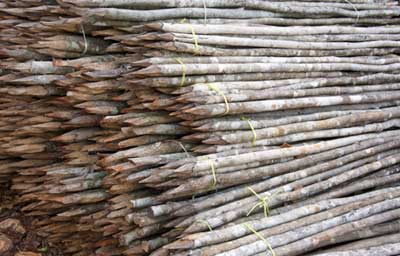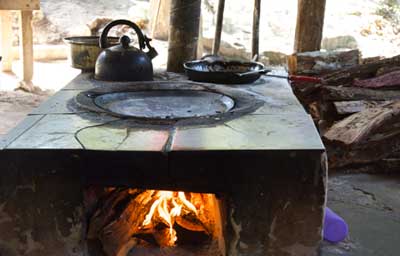Monitoreo del jaguar y sus presas en la Reserva Biocultural Kaxil Kiuic

Punto de reunión en la selva, o K’áax en maya, y su sitio arqueológico llamado Kiuic, son el origen del nombre de la Reserva Biocultural Kaxil Kiuic de 1,642 hectáreas, ubicada en el corazón de la Reserva Estatal Biocultural del Puuc. Pero su valor no es solo por su patrimonio histórico cultural, también es por su capital natural, ya que cuenta con una selva mediana subcaducifolia en buen estado de conservación y alto valor biológico. Prueba de ello es la presencia confirmada de las cinco especies de felinos citadas para la Península de Yucatán, incluido el mítico jaguar. Asimismo, cuenta con 19 casos de endemismo, entre las cuales se encuentran dos especies de anfibios, cinco de reptiles, nueve de aves y tres de mamíferos (Callaghan y Pasos 2010).
Cuando apenas comenzaba el nuevo siglo, James Callaghan, director de la Reserva Biocultural Kaxil Kiuic (RBKK), tuvo un encuentro casual que marcaría el destino de la reserva. La fotografía que le enseñaron de una hembra de jaguar ultimada por cazadores en una zona cercana a la reserva habría sido una pieza clave. No solo significaba esto la presencia de la especie, sino que reflejaba la difícil realidad de la convivencia entre el ser humano y el jaguar. Luego de este episodio, hubo muchos relatos que hicieron sospechar la presencia de una población estable de jaguares en la región del Puuc. En este contexto, y en conjunto con el Dr. Markus Tellkamp, en ese entonces de Millsaps College, y el Biólogo Ricardo Pasos, se inicia en el año 2005 el programa de “Monitoreo de Fauna Silvestre de la RBKK”, con un número reducido de cámaras trampa, cuyo objetivo fue conocer y registrar las especies que hacen uso del hábitat. Para el año 2008, con fondos de Millsaps College y con la colaboración de Biocenosis AC, se incrementa el esfuerzo de muestreo y se comienza a obtener una importante base de datos de la fauna presente en la reserva. Entre los primeros hallazgos se encuentra una hembra de puma que utiliza el predio como sitio de reproducción, ya que fue fotografiada reiteradas veces y en diferentes etapas de gestación, incluso con su cría. Sin embargo, es en el año 2010 cuando se captura la foto más esperada, una hembra de jaguar. Es entonces cuando se comienza a definir una estrategia para incrementar el esfuerzo de muestreo, con una metodología estandarizada para felinos mayores y sus presas.
La primera fotografía de una hembra de jaguar en 2010 marcó un primer hito, aunque el proyecto de monitoreo aún no había iniciado. Esa presencia documentada despertó el interés de un grupo de benefactores para consolidar una estrategia que culminaría tres años más tarde con el nacimiento del proyecto de conservación del jaguar. Con ese objetivo trazado es que durante los años 2011 y 2012 se organizaron eventos para la recaudación de fondos complementarios. Para ese entonces, los primeros esfuerzos en el estudio del jaguar en la Península de Yucatán, como el caso de la Reserva Ecológica El Edén en el norte de Quintana Roo, y Pronatura en la reserva El Zapotal al norte de Yucatán, entre otros, comenzaban a brindar datos sólidos sobre sus poblaciones. Esto incentiva a la RBKK para definir una metodología previamente consensuada en el estudio de la especie, basada en el marco metodológico desarrollado por el Censo Nacional del Jaguar y sus Presas (CENJAGUAR), a cargo del Instituto de Ecología de la UNAM y la CONABIO. Con fondos recaudados suficientes para la compra de cámaras trampa y el mobiliario necesario, en el año 2013 se inicia el proyecto denominado “Conservación del jaguar en el Puuc”, donde se define como objetivo inicial el monitoreo del jaguar y sus presas a cargo de Kaxil Kiuic, en el que participan vecinos con predios privados al norte y el ejido San Agustín al sur de la reserva. Para el diseño de muestreo, y por recomendación de expertos en el estudio de jaguares, la metodología de CENJAGUAR fue adaptada de acuerdo con las características del paisaje de la reserva, basándose en el supuesto de presentar densidades bajas similares a las poblaciones del centro norte de la península, en comparación con las poblaciones del sur. En ese sentido, se han definido alianzas con diversas organizaciones que trabajan bajo el esquema de CENJAGUAR para homologar metodologías de monitoreo más adecuadas que permitan hacer comparables los datos obtenidos.
Dentro de las adecuaciones de la metodología al sitio de muestreo sobresale la necesidad de obviar algunas áreas de la Reserva Biocultural del Puuc debido a la alta presencia de grupos organizados de cazadores, lo cual implica una probabilidad muy alta de pérdida o daño de las cámaras. Sin embargo, se ha identificado algunas áreas con caza furtiva donde existe una alta frecuencia de avistamiento de jaguar y de puma. Por esta razón, se ha iniciado un acercamiento con estas comunidades a través de la alianza Nukuch Ka’ax, una asociación que ha estado consolidando estrategias de diversificación productiva con sistemas silvopastoriles y agroforestales en esas áreas. Una vez iniciado el proyecto, en la primera temporada de muestreo de 2013 se identificaron cinco jaguares, ocho pumas y un alto número de ocelotes, además de otros mamíferos de importancia como pecarí de collar y venados, pero en el año 2014 las cámaras no tuvieron ningún registro de jaguar. En este segundo año se presentan dos nuevos obstáculos, se retiran los principales benefactores del proyecto, y el principal investigador de Millsaps College en la reserva, el Dr. Markus Tellkamp, deja la universidad. Esto provoca una desaceleración en el proyecto, que vuelve a tomar impulso en el año 2014 con el foro desarrollado en Cancún en el que nace una iniciativa denominada “La voz del Jaguar”. En este evento se percibe una clara voluntad mancomunada de varias organizaciones para el estudio de esta especie en la Península de Yucatán, y marca un nuevo hito en el desarrollo del proyecto. La Reserva Biocultural Kaxil Kiuic siempre ha tenido un componente de educación y de vinculación con comunidades cercanas. Muchos habitantes de la región han sido beneficiados con trabajos temporales, y muchos dueños de terrenos vecinos piden ser incluidos en el programa de monitoreo. Los predios privados y ejidales vecinos son parte fundamental del paisaje, y deben ser incluidos en la iniciativa, menciona Callaghan. Los obstáculos surgen con los cazadores furtivos que no son de subsistencia, en este sentido el proyecto está comenzando a establecer estrategias de colaboración con ellos. Entre las estrategias, y en el marco de REDD+, se fortalece un vivero de especies silvestres de importancia económica y ecológica para la restauración del paisaje en comunidades de la zona (ver recuadro). De esta manera, algunos cazadores y familiares de los grupos organizados ya se han acercado y expresado el interés de establecer convenios de colaboración para ser beneficiados con plantas producidas en la RBKK e integrarlas en sus sistemas silvopastoriles. “Creemos que de esta manera, entregando vida y comenzando a dialogar, es una forma de hacer comunidad, hay que hacer comunidad, somos vecinos”, concluye James Callaghan.
Restauración de paisajes agropecuarios y forestales en el área de la Reserva Estatal Biocultural del Puuc
Bibliografía Callaghan, J. M. y Pasos, R. 2010. Reserva Biocultural Kaxil Kiuic. Biodiversidad y Desarrollo Humano en Yucatán: estrategias para la conservación. |























